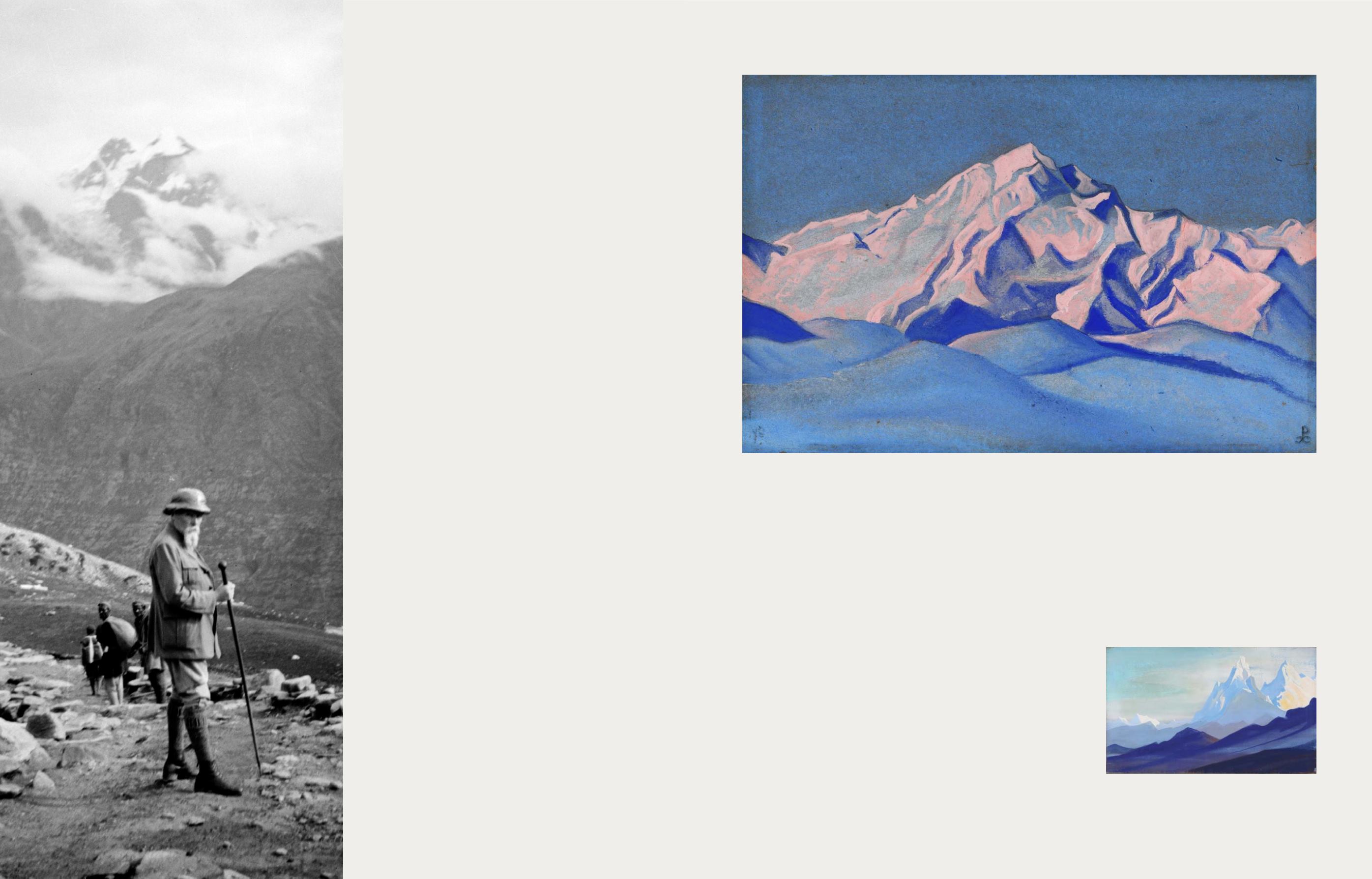

36
37
PROPERTY FROM THE KEJRIWAL FAMILY COLLECTION, KOLKATA
17
NICHOLAS ROERICH
(1874 ‒ 1947)
Himalaya
Signed in Russian with artist's monogram (lower right);
inscribed '152' (on the reverse)
1945
Tempera on board
11.5 x 17.25 in (29.2 x 43.8 cm)
Rs 80,00,000 ‒ 1,00,00,000
$ 126,985 ‒ 158,735
NON‒EXPORTABLE NATIONAL ART TREASURE
PROVENANCE:
Acquired directly from the artist's son
H K Kejriwal Collection
Gifted to the present owner
Himalayas
, 1940
Saffronart, New Delhi, 21 September 2017, lot 49
Sold for Rs 4.8 crores ($761,905)
The “Master of Mountains,” Nicholas
Roerich was a noted writer, theosophist
andprolific artist fromRussia, whomade
India his home. In his many expeditions
across the mountainous terrains of
Central Asia and the Himalayan range
during the 1930s and ’40s, Roerich
came across wondrous sights that
inspired a wealth of paintings and
memoirs. Roerich’s eloquent writing
reflects his spiritual connection with
the mountains. This awe and wonder
is captured even more strikingly in his
paintings, as seen in the present lot.
In this painting, Roerich depicts snow‒
capped mountain peaks at twilight,
with their multi‒hued lighting. Subtle
shades of pink and mauve emerge as
the waning light hits the terrain. In this
masterful study of light and shadow,
Roerich gives careful attention to every
topographical detail. Rocky ridges
and snowy dunes invite the viewer to
experience this moody landscape as he
would have.
The present lot was painted when the
artist resided in Naggar, a village in
the Kullu Valley of Himachal Pradesh.
Roerich was fascinated with the
East, and India in particular, since his
childhood when he first came across,
and grew to admire, an old family
painting of a majestic mountain. He
later discovered that it was the famous
Kanchenjunga in the Himalayan range,
which he eventually trekked across
and painted in his later years. Quoting
from the Chinese book,
Wei Tsang
T’u‒Shih
, in his diary in 1924, he writes,
“The luster of the mountain peaks is
equal unto emerald. Verily the beauty
and perfection of all objects make this
place incomparable.” (
Altai‒Himalaya:
A Travel Diary, Part I India
, New York:
Nicholas Roerich Museum, online)
Nicholas Roerich, 1931‒32, Kulu‒Lahul, India
Image courtesy of the Nicholas Roerich Museum, New York


















